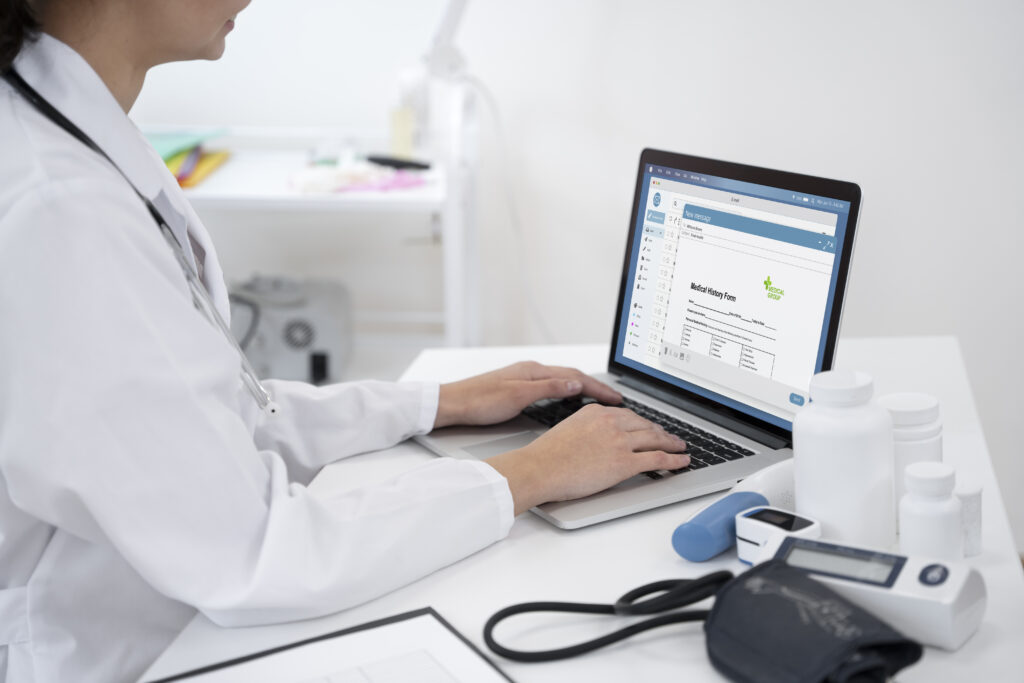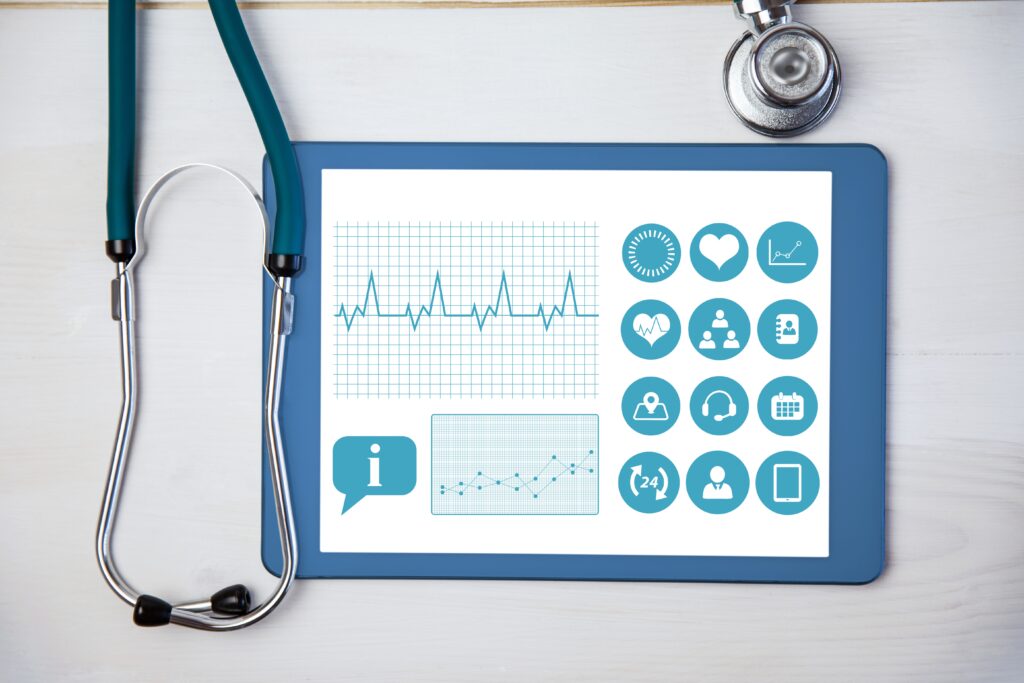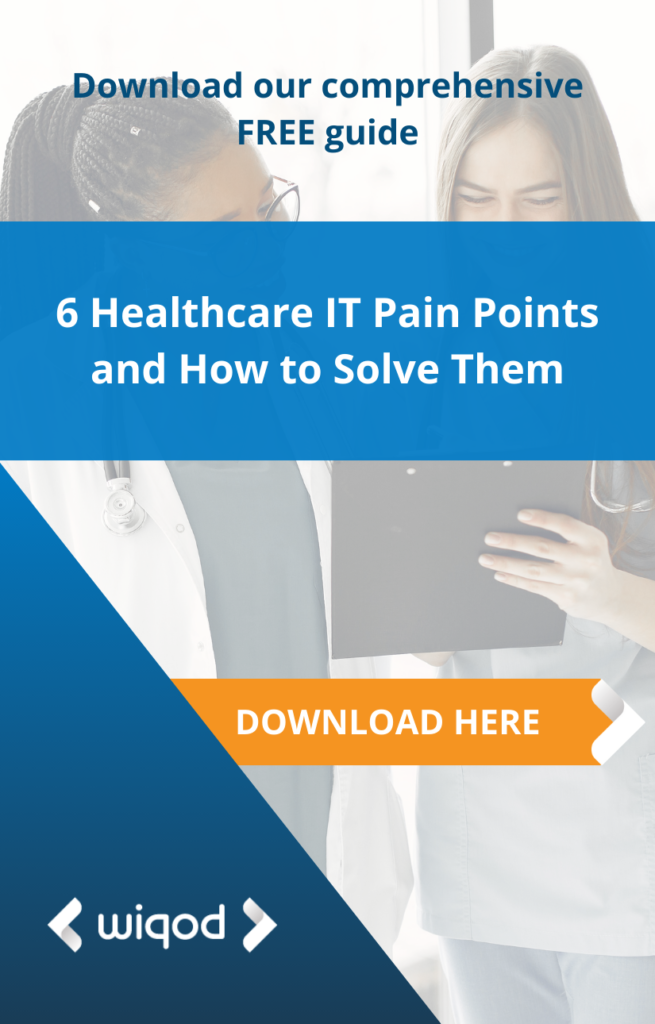The healthcare industry is constantly evolving, and software development is playing a major role in this transformation. providers are using software to improve their operations, patient care, and research.
Software development for healthcare today
It is already a fact that software development has been important for healthcare providers for years. We, at Wiqod, worked with several providers over the years. That’s why we can give some examples of which tasks healthcare companies have been implementing in software development to improve their services.
- Increased efficiency: The software can automate many of the manual tasks currently performed by healthcare providers. This can free up staff to focus on more patient-facing activities, and it can also lead to significant cost savings.
- Enhanced patient care: Software can be used to create more personalized and efficient patient experiences. For example, patients can use online portals to schedule appointments, view their medical records, and communicate with their providers.
- Improved research: Software can be used to collect and analyze data to better understand diseases and treatments. This information can then be used to improve research and development, and it can also help to identify new areas of research.
The arrival of new technologies and trends
The development of new technologies is changing the landscape of what software development is capable of doing for providers. At Wiqod we are working on implementing these new technologies. Based on our experience with clients in the healthcare industry we understand that these 3 technologies will become a priority in 2023/24:
- Artificial intelligence (AI): AI is being used in healthcare to improve diagnosis, treatment, and patient care. For example, AI-powered systems can help doctors to identify diseases earlier, recommend treatment plans, and monitor patients remotely.
- Machine learning (ML): ML is a type of AI that allows software to learn and improve over time. ML is being used in healthcare to develop new drugs, personalize treatment plans, and predict patient outcomes.
- Blockchain: Blockchain is a secure and transparent way to store data. Blockchain is being used in healthcare to track patient records, manage drug supply chains, and conduct clinical trials.
These are just 3 of the many healthcare software trends that are emerging. As the industry continues to evolve, we can expect to see even more innovative and disruptive technologies being used to improve patient care for 2023/24.

Why nearshoring is leading these changes
With the pandemic and the rise of remote work, many companies in the healthcare industry are turning to nearshore to stay ahead of these changes and offer superior value propositions to their users. Here are some of the benefits of nearshoring the software development process:
- Cost reduction: Nearshoring can reduce the cost of software development by taking advantage of lower labor costs in nearby countries. Nearshoring can help to reduce the cost of software development by up to 50%. This is because labor costs are typically lower in nearshore countries than in the United States or Europe. This can be a significant savings for healthcare providers, especially those with large software development budgets.
- Better communication: Nearshoring can also help to improve communication between healthcare providers and their development teams. This is because the two parties will be located in similar time zones and cultures, which can make it easier to collaborate and resolve issues. Nearshore countries often have a strong IT industry, and many of their graduates have experience working on complex software projects.
- Regulatory compliance: Nearshore partners can help healthcare providers to comply with a variety of regulations. This is because they will be familiar with the regulatory environment in the healthcare industry.
Overall, nearshoring can be a valuable tool for healthcare providers that are looking to reduce the cost, complexity, and risk of software development. By working with a nearshore development team, such as the one we have at Wiqod, healthcare providers can gain access to a wider pool of experienced professionals, reduce labor costs, and improve communication and collaboration. This can help to ensure that software development projects are completed on time and within budget and that the resulting software meets the specific needs of the healthcare provider.
Some examples of healthcare software solutions we’re implementing today
Before ending the article with our final thoughts it’s important to mention some of the applications that healthcare providers are developing with the help of nearshore software development companies, such as Wiqod:
- Electronic health records (EHRs): EHRs are software systems that store and manage patient medical records. EHRs can help to improve the quality of care by providing healthcare providers with access to patient information at the point of care.
- Clinical decision support (CDS): CDS software can help healthcare providers to make better decisions about patient care. CDS software can provide alerts and reminders, and it can also help to identify potential risks.
- Patient portals: Patient portals are online tools that allow patients to access their medical records, schedule appointments, and communicate with their providers. Patient portals can help to improve patient satisfaction and engagement.
- Remote patient monitoring (RPM): RPM software allows healthcare providers to monitor patients remotely. RPM software can help to improve the quality of care by providing healthcare providers with real-time data about patient health.

Final thoughts
The healthcare industry is undergoing a major transformation, and software development is playing a major role in this change. The trends outlined in this article are just a few of the many ways that software is being used to improve patient care. As the industry continues to evolve, we can expect to see even more innovative and disruptive technologies being used to improve the quality of healthcare.
Nearshoring is a crucial trend that is helping to drive innovation in the healthcare software industry. By working with nearshore partners, healthcare providers can gain access to a wider pool of experienced professionals, reduce labor costs, and improve communication and collaboration. This can help to ensure that software development projects are completed on time and within budget and that the resulting software meets the specific needs of the healthcare provider.
The future of healthcare software is bright, and nearshoring is a key trend that will help to shape the industry in the years to come. That’s why we at Wiqod can offer you one of the best solutions available in the market to help your organization achieve all its goals and objectives. If you want to learn more about Wiqod services for the healthcare industry you can visit our site by clicking here.

